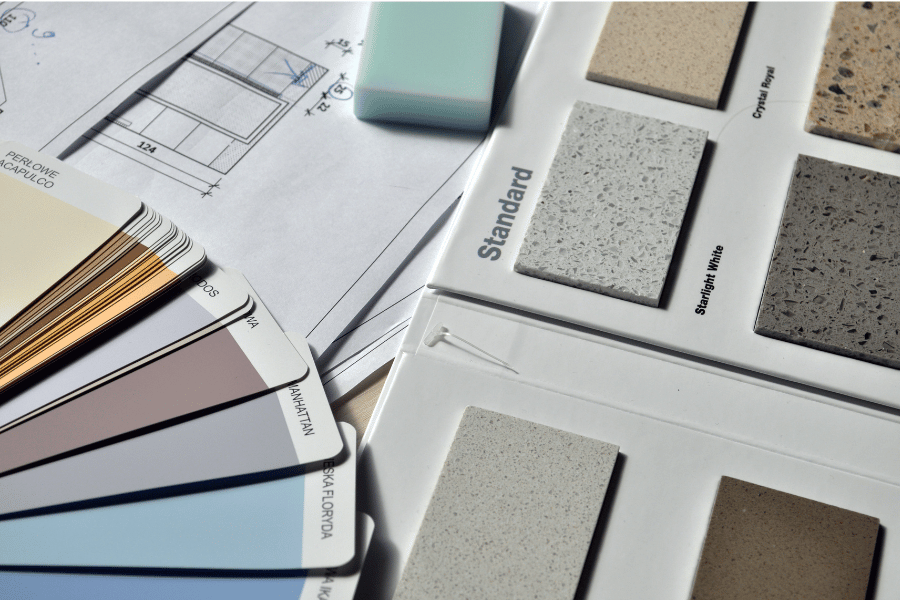Choosing the right color palette for your home’s exterior can transform your curb appeal, making a lasting impression on visitors and potential buyers.
The process might take some thought and attention, but with a few expert tips and considerations, you can select colors that enhance your home’s architecture, complement the landscape, and reflect your personal style.
Here’s a comprehensive guide to help you choose the perfect color palette for your home’s exterior.

1. Understand Your Home’s Architectural Style
Every home has a unique architectural style, whether it’s a classic Victorian, a modern minimalist design, or a charming Craftsman bungalow. Each style has traditional color schemes that enhance its character.
For instance, Victorian homes often feature bold, contrasting colors, while Craftsman homes look stunning in earthy tones. Researching your home’s architectural style can provide valuable insights into the color palettes that will best complement its features.
2. Consider the Surrounding Environment
Your home doesn’t exist in isolation; it’s part of a larger environment. Consider the natural landscape, neighboring homes, and the overall vibe of your neighborhood.
If your home is surrounded by lush greenery, earthy tones like sage green, taupe, or warm beige can create a harmonious look. In coastal areas, soft blues, sandy neutrals, and crisp whites often blend beautifully with the surroundings.
Aim for a color palette that feels cohesive with the environment, yet distinct enough to make your home stand out.
3. Factor in Fixed Elements
Fixed elements such as your roof, brickwork, or stone accents are not easily changeable, so it’s important to consider their color and texture when selecting your paint palette. These elements can serve as a guide or constraint.
For instance, if you have a red brick facade, a complementary color palette of warm neutrals, deep greens, or classic whites can tie everything together seamlessly.
4. Create a Balanced Color Scheme
A balanced color scheme typically involves three main colors: a dominant color for the main body of the house, a secondary color for trim and smaller architectural details, and an accent color for doors, shutters, and other features.
The dominant color should cover the largest area, so it’s crucial to choose a hue that you love and that will age gracefully. The trim color should complement the dominant color without overpowering it, while the accent color adds personality and can be a bit bolder.
5. Test Before You Commit
Colors can look dramatically different in various lighting conditions and at different times of the day. Before making a final decision, it’s wise to test a few colors on large sections of your exterior.
Observe how the colors look in morning light, afternoon sun, and under evening shadows. This will give you a better sense of how the colors will appear in real-world conditions and ensure you’re happy with the choice.
6. Embrace Timeless Trends
While it’s tempting to follow the latest trends, choosing timeless colors can help your home maintain its appeal for years to come.
Classic color combinations, like navy blue and white or taupe and cream, have enduring charm and versatility. However, if you’re drawn to trendy colors, consider incorporating them as accents or in areas that are easier to update, such as front doors or shutters.
7. Think About Future Maintenance
Some colors require more maintenance than others. Dark colors, while striking, can show dirt and wear more easily and may need more frequent touch-ups.
Light colors can make your home look larger and more inviting but might require more frequent cleaning to maintain their fresh appearance. Balance your aesthetic preferences with practical considerations to ensure your chosen palette is both beautiful and manageable.
8. Seek Professional Advice
If you’re feeling overwhelmed or uncertain, don’t hesitate to consult a professional painter or color consultant. Their expertise can provide valuable insights and help you avoid costly mistakes.
They can offer color samples, recommend quality paints, and ensure that the colors you choose will look stunning and last for years.
In conclusion, choosing the perfect color palette for your home’s exterior is a blend of art and science. By considering your home’s architecture, the surrounding environment, and your personal style, you can create a look that enhances your home’s beauty and curb appeal.
Take your time, test your choices, and don’t be afraid to seek professional advice. With thoughtful planning and attention to detail, your home can become the standout gem of the neighborhood.

Leave a Reply